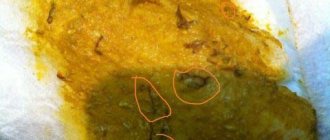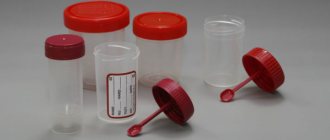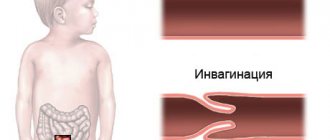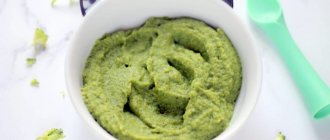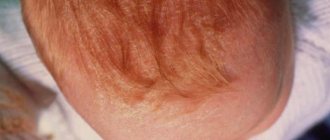What does it look like
The consistency of a newborn baby's stool is thick, viscous (tar-like), and black or black-green in color.
A few days after the baby is born, the stool changes its color to gray-green, and a month later - to yellow. Evidence of normal microflora is the presence of a sour smell of feces and the presence of a small amount of mucus impurities. A lot of mucus in a baby’s stool signals the body’s protective reaction to the pathological process occurring in it. If, after a newborn has pooped, jelly-like mucous patches, streaks, or a noticeable lump of mucus, clearly different in consistency from feces, is observed in his feces, you need to pay attention to the color of the discharge. The color depends on the enzymes produced and can indicate the reason for their increase. The presence of pathological processes is indicated by:
- deterioration of the child’s condition, decrease in activity and rate of weight gain;
- bad breath;
- stench of feces;
- sleep disturbance;
- diarrhea, constipation.
Possible reasons
Quite often this phenomenon is observed in children in the first days or weeks of life. Mucous stool in a newborn is explained by the fact that the baby has a sterile gastrointestinal tract. Along with food, various bacteria penetrate into it - both beneficial and pathogenic. A struggle for survival begins between them.
- violation of the diet by a nursing mother;
- unsterile breast milk;
- intestinal dysbiosis caused by pathogens;
- lactose intolerance;
- switching to another type of formula when artificial feeding;
- thrush transmitted by the mother during childbirth;
- introducing complementary foods too early.
Poor nutrition is one of the reasons for the appearance of mucus.
In older children, the most common reason for the appearance of a lump of mucus (or several) is dysbacteriosis. This is especially true if we are talking about a one-year-old baby who puts everything in his mouth and can easily catch an infection. Of course, for this reason, mucus may appear in the stool in a child of 2 years of age, as well as in older children.
Other common reasons include:
- an unbalanced diet or a sudden change in it;
- colds, acute respiratory infections, ARVI;
- taking antibiotics;
- hypothermia in the pelvic area (bathing in a pond for a long time or sitting on damp ground);
- worms;
- prolonged constipation;
- allergic reaction.
Much less common in children are such provoking factors for the appearance of lumps of mucus in the stool, such as autoimmune pathologies, cancer, Crohn's disease, intestinal obstruction, cystic fibrosis, colitis. All of these ailments are very serious. During the examination, they should be excluded first.
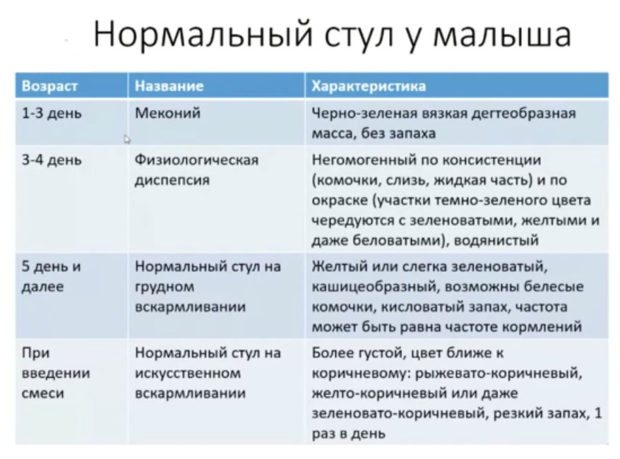
Normal stool in a baby
What to do - Dr. Komarovsky about mucus in a child’s stool
A well-known specialist in the field of pediatrics advises not to rush to conclusions if mucus impurities suddenly appear in the feces of a newborn.
It is recommended to wait 2-3 days, observe the work of the baby’s digestive system, take note of which food products provoke such a reaction of the gastrointestinal tract, and only then raise the alarm. Komarovsky explains the mucus in the stool of an infant by the fact that the child’s intestines have not yet fully adapted to independent life. In some newborns, the tissues of this digestive organ are immature to foods with a rough consistency, which are included in the diet of the first complementary foods. Therefore, Komarovsky’s opinion is that if the intestinal function of a small child does not stabilize during the first 2 days, parents need to make an appointment with a pediatrician and also get tested.
Only after this, having received the conclusions of specialists, can you find out the cause of the disease, and, if necessary, select the appropriate therapy. Self-treatment is strictly prohibited and can cause a deterioration in the baby’s well-being, even leading to even greater upset of the digestive system with the appearance of signs of diarrhea.
If parents notice mucus in the baby's stool, it is recommended to visit a pediatrician. A specialist will help determine the cause and recommend a suitable solution. In most cases, parents are quite capable of coping with this problem:
- Change the mother's diet if she is breastfeeding (avoid flour, fried, smoked, spicy, sweet).
- If the child is bottle-fed, then choose the appropriate formula for him.
- Do not rush to introduce complementary foods.
- After the above measures have been taken, monitor the child’s condition for several days.
- If the mucus was clear and not white, the parents' actions may be effective and the problem will go away. However, in any case, it is recommended to visit a pediatrician for an examination and advice.
Important! You should not resort to self-treatment with medications and other means without consulting your pediatrician.
Diagnostics
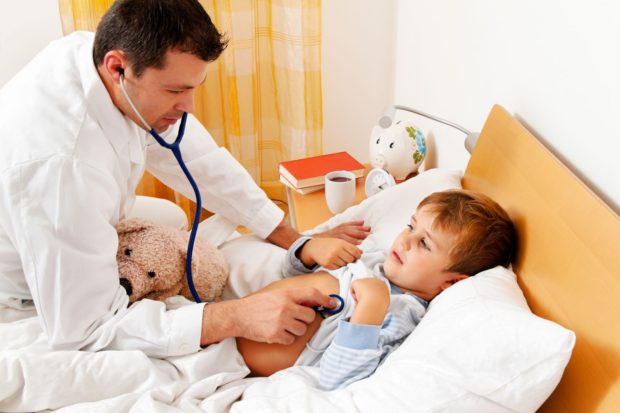
Abundant mucus in the stool is clearly visible to the naked eye. It is also easy to notice bloody, yellow, green, white, black masses. Before going to the doctor, it is advisable to take a closer look at the clot of mucus, determine its consistency, shade, and quantity, so that the specialist gets the most complete picture and chooses the optimal examination methods. You can take your baby's soiled diaper with you.

Stool analysis - a coprogram for diagnosing the disease
Most often, if there is mucus in the stool, a coprogram is performed. Also practiced are bacterial culture, macro- and microscopy of feces, a general blood test, studies to identify parasites, ultrasound, and x-rays. The use of certain methods depends on the symptomatic picture, medical history, age, and general condition of the patient.
To determine the reason why mucous stool appears in a baby, it is necessary to take tests for intestinal microflora. The doctor, based on the symptoms, prescribes tests for eggworm, dysbiosis, allergens, carbohydrates, and you will also have to do a coprogram. The technique for collecting baby stool is as follows:
- Prepare a special container, ensuring its sterility.
- In the morning (or the night before), use a spatula to collect feces from the surface of the diaper (not from the depths), trying to get into places with small patches of mucus. If the stool is too liquid, you can lay down a medical oilcloth and wait until the baby defecates on it.
- If the analysis took place in the evening, you should place the box of stool in the refrigerator, and in the morning, attaching a tag with the child’s name and surname, take it to the laboratory.
Diagnostics and tests
It is necessary to differentiate physiological manifestations of mucus from pathological ones. The main hint about the origin of the symptom is additional clinical manifestations and a thorough questioning of the mother (what the child ate, whether he was sick with anything recently, whether new complementary foods were introduced, whether there are hereditary diseases).
We recommend reading:
We invite you to familiarize yourself with the Liver fluke, intermediate and definitive host.
Lactase deficiency: how is pathology manifested and treated in infants?
Basic tests that may be needed to identify the underlying cause:
- Coprogram. Microscopic and biochemical examination of feces will determine additional pathological signs: undigested food, the presence of hidden blood, worm eggs.
- Bacteriological culture (tank culture). Allows you to determine the presence of the pathogen and its sensitivity to antibacterial therapy.
- Culture for dysbiosis. Reveals the degree of separation of pathological and beneficial microflora.
- X-ray of the abdominal organs. Allows you to determine intestinal obstruction, an important test in infants with signs of abdominal bloating against the background of continuous crying (intussusception).
- Blood tests. Even a clinical analysis will make it possible to determine the nature of the inflammation (bacterial - with neutrophilic leukocytosis, viral - with lymphocytic leukocytosis, eosinophilia - with an autoimmune process or helminthic infestations). Blood tests are also carried out to check for antibodies and increased levels of autoimmune factors.
In order to establish the true reason why mucus formed in a child’s stool, it is necessary to conduct a comprehensive examination of his body. To do this, parents must make an appointment with a pediatrician, who is their local doctor and regularly examines the baby for possible developmental disorders.
For this purpose, the following diagnostic procedures are carried out in relation to the child:
- bacteriological seeding of stool to determine the balance of beneficial and pathogenic microflora (first of all, the factor of dysbiosis and the possible presence of intestinal disorders caused by infectious microorganisms are excluded);
- scraping from the circumference of the anal ring (samples of the selected biological material are sent to the laboratory for examination and determination of the presence of worms in the child’s digestive organs);
- blood from a finger for clinical analysis (if the baby’s condition is critical, fever and other dangerous symptoms occur, then it is possible that donation of venous blood will be required);
- Ultrasound of the abdominal organs with a detailed study of diffuse changes in the tissues of the intestines, stomach, pancreas, liver, gall bladder.
In extreme cases, an endoscopic examination of the intestine may be prescribed, when a special probe is inserted into the anus, which is advanced into the intestine and the condition of its mucous membrane, as well as the primary layers of the epithelium, is examined.
What do color and consistency say?
Mucus in stool can look different. Its shade depends on the reason that caused the deviation. Here's what the discharge colors say:
- Green. Indicates the rapid proliferation of pathogens in the intestines. A small amount of such mucus occurs during dysbiosis. Abundant inclusions may indicate enteritis or bacterial colitis. The smell of feces is particularly foul.
- Yellow. It speaks of progressive inflammation. The mucus takes on this color due to the large number of leukocytes in it. Sometimes pus impurities are responsible for the yellowish color.
- Pink. Very bad color. The mucus contains streaks of blood. This symptom may indicate Crohn's disease, erosion, or ulcers in the intestines.
- White. The mucus contains exfoliated epithelial cells. Similar processes occur when the inner lining of the intestines is irritated due to allergies. This color also occurs with worms.
- Red. Explained by a large number of blood impurities. Often, mucus of this color becomes the result of mechanical trauma to the rectum due to frequent use of enemas or gas tubes. A bloody tint may indicate Crohn's disease or allergic colitis.
- Red-brown, black mucus colors occur when internal bleeding has opened.
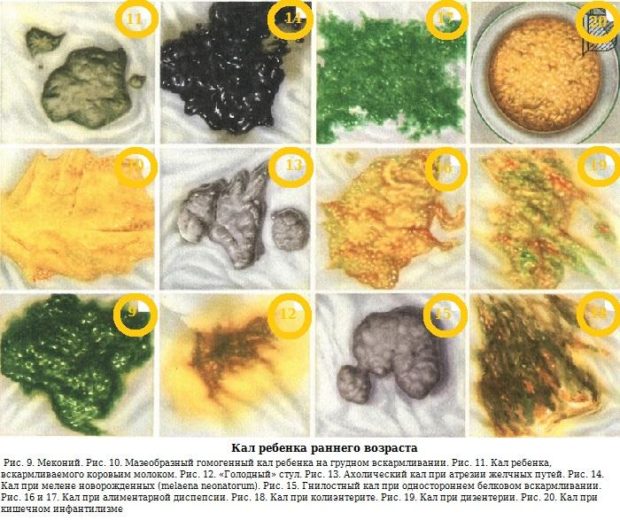
Infant feces - color and disease
The consistency of the mucus also matters. Thick discharge, similar to a dense “jelly” lump, is characteristic of parasite infestations. Liquid - for conditions associated with pancreatic dysfunction or lactose intolerance in a child.
If, instead of stool, only watery mucus is released, an acute intestinal infection is most likely present.
Normal stool in a child undergoing breastfeeding
A newborn's stool can take on different colors and consistency - this depends on the diet of the breastfeeding mother and complementary foods. Correct organization has an impact on the child's stool - feeding at the same time so as to prevent overeating and long periods of fasting.
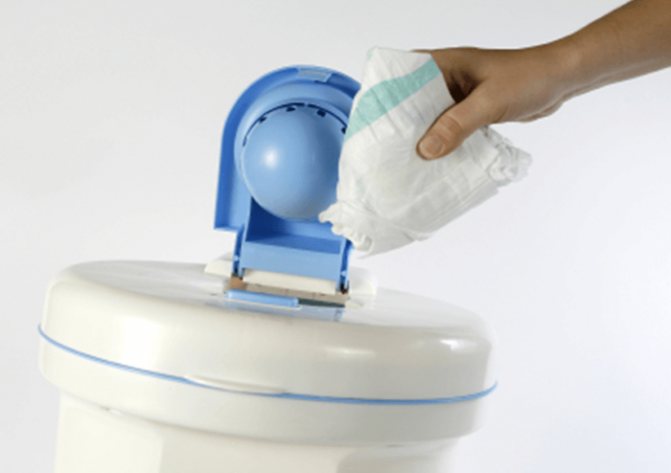
Mucus in a newborn's stool is normal. What are considered normal bowel movements in infants:
- the first three days of life - black or dark green stool with the consistency of thick sour cream, odorless;
- from 3 to 14 days – up to 10 bowel movements per day, gray-green or dark gray stool;
- 14 – 30 days – bowel movements after each meal, the frequency is gradually reduced to 2-3 times a day, the stool is brown or yellow.
White grains, green mucous impurities in a small volume, a faint smell, like cottage cheese or kefir - these are normal phenomena for a child’s stool in the first 10-12 months.
Associated symptoms
A single case of detection of mucus when the child is feeling normal and there are no changes in his behavior is not a cause for concern. If the phenomenon repeats again and again, and other abnormalities are observed, medical attention is needed. The most common accompanying symptoms of mucus are:
- constipation and diarrhea;
- flatulence;
- lack of appetite;
- long crying;
- abdominal pain;
- fever, increased body temperature;
- cough with phlegm (which, when swallowed, enters the stomach and comes out with feces);
- profuse snot (the mechanism is the same as with sputum);
- lethargy, weakness, drowsiness;
- vomit;
- false urge to go to the toilet “for the most part.”
Causes of mucus in baby's stool
Mucus appears in a baby's stool for various reasons - from pathological to banal, related to the peculiarities of the child's stomach and intestines. When breastfeeding, a lot depends on what the mother eats and how the child endured childbirth - his condition in the first year of life forms the immune response, and therefore the functioning of the whole organism.
What does the amount and color of mucus indicate:
- during inflammatory processes, the volume of mucus will increase with each bowel movement;
- clear mucus – enteroviruses or inflammation of the ENT organs;
- yellow, green – bacterial infections;
- pink – may indicate blood in the stool;
- white - helminthic infestations, intestinal infections, with constipation indicates organic intestinal pathologies, polyps.
You can determine the first signs of pathological processes associated with the appearance of mucus yourself. But if the condition worsens, you need to contact a pediatrician, who will accurately determine the cause and prescribe how to cure the pathology in an infant.
Dysbacteriosis
If a baby poops mucus, the reason may lie in a violation of the intestinal microflora. This means that the concentration of beneficial bacteria in the gastrointestinal tract has decreased or some of them have been replaced by pathogenic microorganisms. A decrease in the number of beneficial bacteria is accompanied by the following symptoms:
- inclusions of undigested milk in the stool;
- curdled milk inclusions;
- foamy stools, white mucus;
- bloating, upon palpation the child reacts sharply;
- flatulence;
- increased frequency of bowel movements.
The formation of healthy intestinal microflora in a child is a long-term process that also depends on the immune system, since microflora is part of the immune system. At this age, intestinal dysbiosis can be caused by foods that are still difficult to digest; complementary feeding needs to be reconsidered. Another reason is taking medications; antibiotics often give the same reaction.
Intestinal infections
Green, dark and foul-smelling mucus in a baby’s stool also appears against the background of infection with bacteria, microbes, viruses, and fungi. Infants may suffer from the following intestinal infections:
- dysentery;
- intestinal amoeba;
- salmonella;
- rotavirus infection.
We suggest you read: Can pregnant women drink wine in the early and late stages? Is it possible to have homemade, non-alcoholic or dry red wine?
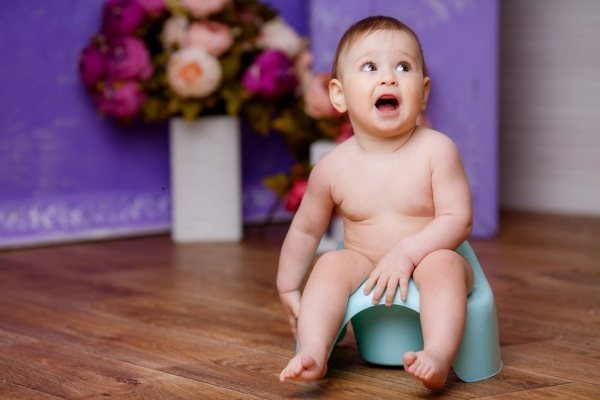
Infants are difficult to tolerate such infections. The mucus is mixed with clots, the body temperature rises, the child refuses to eat, and vomiting appears. An intestinal infection requires emergency treatment - diarrhea and vomiting quickly dehydrate the body.
Intestinal invaginitis
This is one of the most dangerous pathologies for infants. If you suspect invaginitis, you should urgently seek help. Symptoms:
- severe pain after eating - the child screams, reacts sharply to palpating the abdomen in the lower part;
- non-stop vomiting;
- the stool is liquid with admixtures of blood and mucus, gradually only mucus remains, without feces.
Reaction to complementary foods
Liquid stool with mucus may appear in an infant for the following reasons:
- starting complementary feeding earlier than six months;
- feeding vegetable purees;
- sudden transition to complementary feeding;
- too long periods of fasting;
- lack of water, liquid food.
In such cases, not only mucus appears, but the color of the stool also changes. Infants often develop green diarrhea with mucus when feeding them vegetable purees - they provoke fermentation in the still fragile intestines.
Lactase is an enzyme responsible for the decomposition of milk sugar, lactose. Its deficiency leads to foamy stools, flatulence, diarrhea, and the appearance of lumps of milk in the stool. In newborns, the absence of lactase can be congenital or appears against the background of dysbacteriosis and is temporary. Mucus lumps with milk inclusions require a test for carbohydrate content in the stool.
With gluten deficiency, a lot of mucus appears in the stool, vomiting, and nausea. The pathology is similar to lactase deficiency, but in addition to it, there is also a lack of other enzymes that break down plant proteins and cereals.
Allergy
One of the most common causes of mucus in stool. It is also accompanied by redness of the skin, rashes, peeling, and the formation of a crust on the skin of the cheeks and scalp. To eliminate the reaction, you need to identify the intolerable product, carefully review complementary feeding and the mother’s diet for the presence of allergens.
Cold
The appearance of mucus also causes a runny nose. Since a small child cannot yet clean his nose on his own, he reflexively swallows the resulting mucus, which then passes into the gastrointestinal tract. If the concentration of leukocytes in the feces of an infant exceeds the level of a cold, a pediatrician or pediatric infectious disease specialist selects treatment.
The volume of mucus, its consistency and color depend on the provoking cause.
| Stool color | Causes |
| Green feces | Dysbacteriosis, development of enteritis or colitis of a bacterial nature. |
| Yellow feces | High white blood cell count. |
| Stool with white mucus. | The presence of irritation in the intestines when exposed to an allergen. Worm infestation. |
| Pink feces | Crohn's disease, presence of gastric ulcer or erosion. |
| Red cal. | Frequent use of enemas or tubes to remove gases. Allergic colitis. Crohn's disease. |
| Red-brown feces | Open internal bleeding. |
Consistency also plays a huge role. Thick discharge is observed with helminthic disease.
Mucus in the stool of a newborn with a liquid consistency is observed when the pancreas is disrupted or lactose intolerance. Mucus with a watery consistency signals an infection of the intestines. A slight secretion of mucus should not cause concern if the baby is feeling optimally.
Associated symptoms include:
- presence of constipation or diarrhea;
- bloating;
- loss of appetite;
- constant crying;
- colic;
- presence of fever;
- temperature increase;
- copious discharge of snot from the nose;
- drowsiness;
- vomiting
A single case of detection of mucus when the child is feeling normal and there are no changes in his behavior is not a cause for concern. If the phenomenon repeats again and again, and other abnormalities are observed, medical attention is needed. The most common accompanying symptoms of mucus are:
- constipation and diarrhea;
- flatulence;
- lack of appetite;
- long crying;
- abdominal pain;
- fever, increased body temperature;
- cough with phlegm (which, when swallowed, enters the stomach and comes out with feces);
- profuse snot (the mechanism is the same as with sputum);
- lethargy, weakness, drowsiness;
- vomit;
- false urge to go to the toilet “for the most part.”
Famous pediatrician E.O. Komarovsky points out that slight inclusions of mucus in the stool of an infant are normal, especially before the age of one month (see also: green liquid stool in a one-month-old baby). During this period, newborns experience a deficiency of the enzyme responsible for the breakdown of milk sugar - lactase.
In some cases, mucus in the stool is a sign of a pathological process or improper nutrition of the child. Such situations are complemented by other symptoms of trouble, the main ones:
- large volumes of mucus with each bowel movement;
- increased body temperature;
- very liquid green stool with a pungent odor and streaks of blood;
- weight loss or insufficient weight gain;
- capriciousness, causeless crying.
Mucus due to diarrhea
Mucus accompanied by diarrhea is the main sign of dysbiosis. It is almost transparent if the disorder is caused by antibiotics. With “killed” intestinal microflora, digestion is seriously impaired. A child may ask to use the potty or toilet literally ten minutes after eating. His body receives very few nutrients. Diarrhea with mucus is usually accompanied by abdominal pain and increased gas formation.
Frequent loose stools in infants are a special cause for concern.
The small, immature organism becomes dehydrated very quickly, which can be fatal. The situation gets worse when diarrhea is accompanied by vomiting. The baby must be urgently taken to the hospital or an ambulance called.
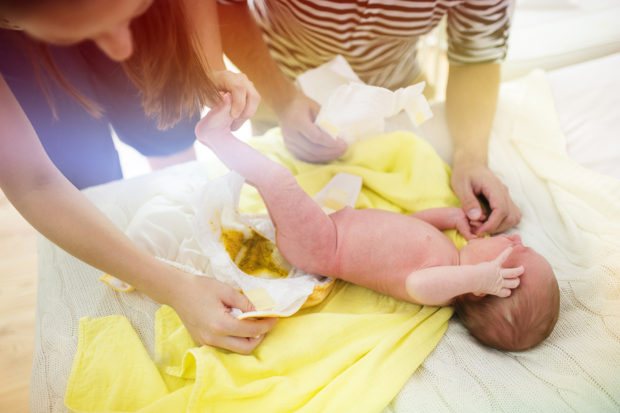
A doctor's examination is mandatory for infants.
When should you consult a doctor?
Mothers need to carefully monitor their baby's bowel movements. This is especially true for young children who cannot clearly describe their symptoms.
If the child’s general well-being is normal and there are no additional complaints, you can watch the baby a little, change the nature of your diet, or, if you are breastfeeding, go on a strict diet yourself. If the baby’s stool does not change within a few days, you can routinely consult with a pediatrician and, if necessary, have a culture tested for dysbacteriosis or coprogram.
You should definitely consult a doctor if:
- increased body temperature;
- nausea;
- vomiting;
- the appearance of pathological impurities (blood, helminths, pieces of undigested food);
- flatulence;
- change the colors of the slime to green, white or red;
- stomach ache;
- pronounced anxiety of the baby, crying;
- severe diarrhea.
Mucus due to constipation
☝️ Mucus is often a phenomenon with constipation. A large amount of it is secreted to protect the walls of the colon, which can be easily injured by hardened fecal stones. The mucous masses are usually white. Sometimes they have a pinkish or light red tint, which may indicate the presence of mechanical damage.
Mucus due to constipation is a symptom of many dysfunctions. It is more common in adults (with hemorrhoids, neoplasms, intestinal obstruction), but sometimes pediatric doctors also record it.
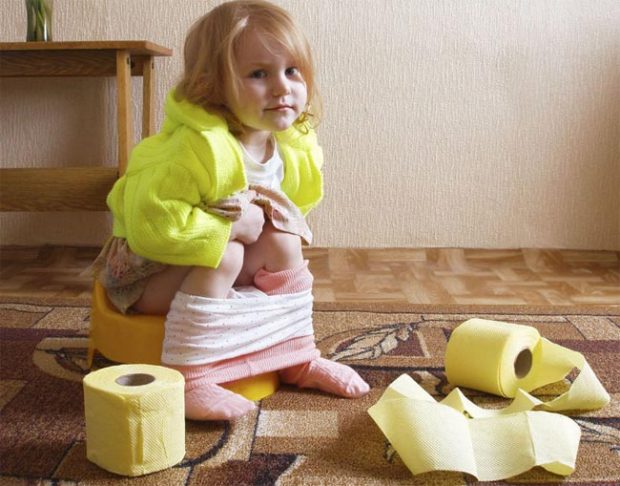
Constipation in a child is almost always accompanied by mucus
What does mucus in stool mean?
With chemical or mechanical irritation of the inner lining of the stomach and intestines or in the case of an inflammatory process, mucus is secreted more actively. If normally in the large intestine mucus is completely mixed with feces and is not visible in the stool, then in pathological conditions its amount increases, and it can be determined by eye or by examining the coprogram.
A coprogram is a stool analysis that determines color, consistency, pH, the presence of muscle fibers, connective tissue, epithelium, starch, fatty acids, soaps, iodophilic flora, mucus, erythrocytes and leukocytes. It is used to roughly judge diseases (digestion and absorption disorders) or the normal functional state of the gastrointestinal tract.
The reasons for the appearance of mucus in feces lie in the fact that the intestines are protected from something or someone, that the mucous membrane is injured or inflamed. Depending on the nature of the damage or inflammation, it can be:
- transparent - catarrh
- yellow or green - bacterial, purulent process
- have a pinkish color or blood impurities - hemorrhagic inflammation or ulceration of the mucous membrane (see hidden and scarlet blood in the stool: causes).
When to sound the alarm
One-time diarrhea with mucus in a baby should not worry parents too much. But if such symptoms develop, you need to seek emergency help:
- diarrhea with mucus and blood;
- black and bloody impurities;
- nausea, vomiting;
- screaming, crying, constant worry;
- refusal to eat;
- acute reaction to touching the stomach;
- temperature;
- paleness or severe redness of the skin.
Diarrhea with blood and foul odor requires urgent help. Before the ambulance arrives, you should not give any medications. But it is necessary to ensure the restoration of water balance, to give more fluid, even if this ends in vomiting.
When should you see a doctor?
It is necessary to show the child to a pediatrician if the appearance of mucus is accompanied by other symptoms of various diseases, including:
- foul-smelling diarrhea;
- darkening of urine;
- rare urination;
- profuse and frequent regurgitation;
- smell from the mouth;
- heat;
- weight loss;
- loss of appetite;
- sunken fontanel;
- wrinkled and sagging skin.
If one or more of these symptoms are detected, the baby should be shown to a doctor and undergo the necessary examination to identify possible health problems.
An ambulance should be called at the first suspicion of intestinal obstruction, as well as signs of intestinal infections. If a child suddenly has a fever, vomits, has frequent and foamy stools or watery stools mixed with mucus, an examination by an infectious disease specialist is required.
Parents' actions
Having noticed unusual inclusions in the feces of their child, the first thing parents should do is to carefully look at his behavior: is he sleeping well, is he crying for no reason, is he behaving as usual or has something changed, has he lost his appetite... If everything is normal, and more mucus appeared, but there was no diarrhea, vomiting, or fever, you could exhale. Most likely, there was some kind of temporary glitch ⏱️.
In the same case, when there are accompanying symptoms and the stool contains characteristic impurities, you should not hesitate to visit a doctor. Without a diagnosis, there is no point in carrying out any treatment.
Doctor Komarovsky's opinion
If mucus is detected in a baby's poop, Komarovsky recommends monitoring the child's condition for no more than a day. If during this time the condition has not improved, you should consult a pediatrician - he will prescribe tests to clarify the cause. If the condition not only does not improve, but worsens, do not wait - you need to call a doctor immediately.
Mucus in a child’s stool does not always indicate pathological processes, but parents should be wary. The first signs of disorder and pathologies can be tracked independently, but only a doctor should help the child.
Doctor Komarovsky about intestinal infections
According to the famous pediatrician, Evgeniy Komarovsky, the appearance of mucus in the stool of an infant is a natural reaction of the body to the introduction of complementary foods and the addition of new products to the standard menu. The doctor does not recommend that parents worry too much about changes in the smell, color and consistency of stool, since in the first months of life the baby’s digestive system is just getting started. It is for this reason that symptoms may occur in the form of mucous discharge in a child’s stool.
Treatment with medications
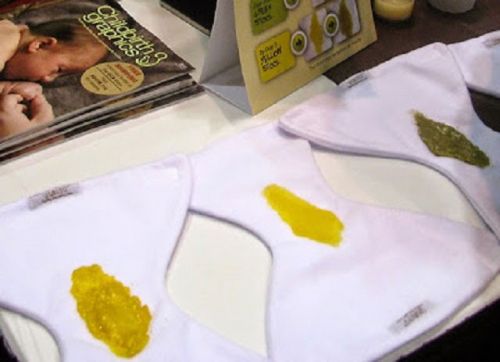
☝️ Mucus in the stool is not a disease, but one of the symptoms of some kind of deviation. It is not the effect that needs to be treated, but the cause. Drug therapy for different pathologies will differ. Eg:
- If a child has a cold, has caught an acute respiratory viral infection, bronchitis, or pneumonia, antiviral medications, nasal drops, gargles, and rubbing are prescribed.
- Dysbacteriosis is treated with intestinal antiseptics and probiotics.
- For infectious intestinal diseases, antibiotics and rehydration agents are indicated. Antiviral drugs may be prescribed.
- Thrush requires the use of antifungal drugs.
- Inflammatory bowel pathologies are treated with sulfalazines and glucocortiroids.
- Pancreatitis is fought with the help of enzyme-containing drugs.
- In the presence of erosions and ulcers, healing, relieving swelling, and painkillers are indicated.
Each case is individual. It is impossible to talk about a single tactic for combating mucus. Only a doctor selects therapy.
Taking medications
If it is not possible to visit a doctor immediately, the baby can be given Smeka or probiotics. Mucus in the stool is not a pathology, but only indicates a specific problem associated with a malfunction of internal organs. Therefore, it is not the effect that needs to be eliminated, but its cause. Treatment may be as follows:
- If the baby gets sick with bronchitis, ARVI, pneumonia, the doctor prescribes antiviral drugs.
- Dysbacteriosis is eliminated with antiseptics and probiotics.
- If intestinal infections occur, a course of antibiotics or antiviral drugs is prescribed.
- Antifungal agents are used to eliminate thrush.
- For intestinal inflammation, glucocorticoids and sulfalazines are prescribed.
- Erosions and ulcers are treated with healing, painkillers.
- For pancreatitis, medications containing digestive enzymes are prescribed.
Important! In each individual case, the course of treatment is prescribed individually.


